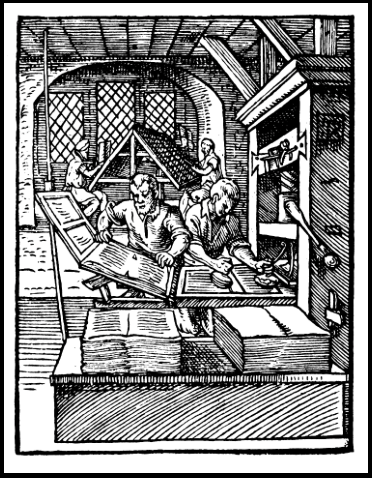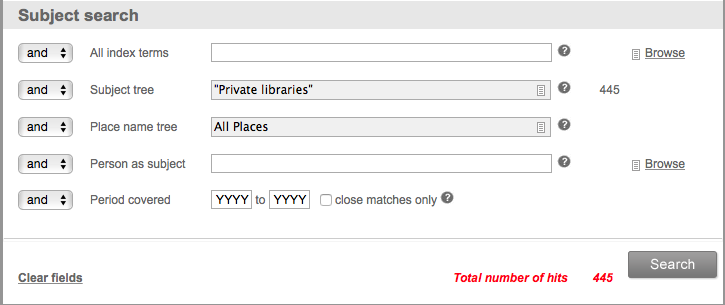
Lindisfarne Gospels (image from British Library)
Much of our cultural heritage owes a large debt of thanks to private collectors of manuscripts, incunabula and printed material; to those individuals who were interested in the accumulation of knowledge and the preservation of our literary history, and who saw fit to pass on their acquisitions for the foundation of libraries. One of the most well-known book collectors is Robert Cotton (1571-1631), whose vast collection of manuscripts include the Lindisfarne Gospels, the Anglo-Saxon Chronicle, Beowulf and Bede’s Historia ecclesiastica gentis Anglorum, which now form a vital core of the British Library collection and are listed in the Catalogue of the manuscripts in the Cottonian Library. Although his habit of disbanding precious manuscripts and rebinding them as he saw fit may seem an act of vandalism to us today, there is no doubt that without his legacy our book history would be far less impressive (even if the odd fire did somewhat deplete stock!).
Another famous private collector of the early modern period was Thomas Bodley (1545-1613). In the collected volume Books and and Collectors 1200-1700 we can learn more about the process of acquiring precious books in the chapter Sir Thomas Bodley‘s library and its acquisitions : an edition of the Nottingham benefaction of 1604, with letters from Bodley to his librarian providing clear evidence of his desperation to gain possession of new stock. Matthew Parker, Archbishop of Canterbury (1559-75) was also a voracious collector of manuscripts, and Matthew Parker‘s manuscripts : an Elizabethan library and its use gives a fascinating account of how he developed and interacted with his private collection.
However, while it is undeniable that the libraries of Cotton, Bodley and Archbishop Parker are invaluable, they all derive from the elite classes, born into privileged positions with disposable incomes that allowed them to amass vast collections in huge private houses. But what of those from more humbler origins? In Common Libraries in Fifteenth-Century England: An Episcopal Benediction, we learn of the earliest book collections being made freely available to the wider public. The very first civic library was Guildhall Library in London and was founded between 1423-1425, largely due to capital from the estate of Richard Whittington, (who, as we remember from childhood stories was four-times Lord Mayor of London), and was founded partly from the private collection of John Carpenter. There were also accessible libraries founded at Worcester, Bristol and possibly Norwich during the fifteenth-century. However, these libraries were all developed with a strong ecclesiastical bent, designed to inform and reform, and often run by members of the clergy. While these book collections were freely available for everyone, it is likely that it would only be the more educated citizens that made use of them, and even then the texts were carefully selected by religious authorities.

Woodcut of printing press (image from Wikipedia)
So what did ordinary people read? Was book ownership something strictly reserved for the wealthy classes and the ecclesiastical community in early modern times, or were the common people encouraged to foster reading habits? In the medieval period, manuscripts were laboriously made from parchment and painstakingly handwritten, which could take months to complete, and therefore were unlikely to be found in ordinary homes. Yet even after the birth of the printing press in the mid-15th century, books continued to be a valuable commodity, although as we can see in the article “Ovid with a Littleton” : the cost of English books in the early seventeenth century, the real cost of printed material is a complicated business, and even by the 1630s, only a handful of people owned more than a hundred books. (Although, despite literacy levels being an area difficult to judge, it is clear from A history of British publishing that reading standards improved dramatically in this period, largely due to the growth of the book trade.)
However, we get a tantalising glimpse into how ordinary people assimilated books into their everyday lives in a fascinating article called Libraries of the “common sort”. Despite a woeful inadequacy in evidence, largely due to the ephemeral nature of cheaply printed items, through probate records we learn of certain individuals who clearly spent part of their limited income on the collection of books. Most pleasing is the forest labourer William Bane, who died in 1614, leaving in his single room his tools, a few items of furniture, writing implements and a small library of books worth 10s. Unfortunately we do not know the titles of the books, but we also learn of John Tayer, a shoemaker, whose account book from 1627 list a wide variety of titles in his ownership, including travel books, almanacs and tomes on spirituality. Accounts such as these provide a vital window into the reading habits of everyday people, who may be too often dismissed as illiterate labourers. Book ownership revealed in Norfolk probate inventories provides further evidence of book ownership across the classes, with more information on the types of books held and, interestingly, where they were kept in the house.
Another area less documented is that of women’s private collections. The Library of Mrs Elizabeth Vesey 1715-91, the woman who part-founded the Bluestocking movement, provides a comprehensive list of the tracts that were integral to herself and her circle. ‘I can’t resist sending you the book’: Private Libraries, Elite Women, and Shared Reading Practices in Georgian Britain is about the library of Elizabeth Rose and her female friends, who actively sought out copies of books and formed an informal network of lending from their private libraries. Through the enthusiasm of these female readers, new ideas on female education and child rearing were able to disseminate to a wider audience. It also highlights how loaning from private libraries could strengthen relations between the privileged and less privileged.

Cragside, Northumberland (image from Wikipedia)
Which brings me neatly onto the next resource, Servants’ reading : an examination of the Servants’ Library at Cragside, a rare example of a nineteenth-century library provided in a country home for the use of the servants. The surviving collection is made up of an eclectic mix of novels, periodicals and non-fiction; some, such as Charles Loudon Bloxham’s ‘Laboratory teaching, or, progressive exercises in practical chemistry’, suggesting that the servants library may have been a receptacle for books not required anywhere else. Although the library indicates no particular learning towards self-improvement, the fact that it exists at all is heartening, and though rare, was not unique. Further research on book ownership in the nineteenth-century is presented in Beyond Bibliophilia: Contextualizing Private Libraries in the Nineteenth Century, a recently published article exploring the complex relationship that develops between owners and their books.
From the resources mentioned, it seems that whether rich or poor, private collections of books have been an important part of people’s lives since the late medieval times, and although the generous legacies of wealthy gentlemen are more relevant than ever to our libraries, it is the image of the humble labourer William Bain, sitting in his sparsely furnished room and reading by candlelight after a hard day’s work, that is all the more pleasing.
As usual, all relevant material can be found in the Bibliography of British and Irish History. To find our most up-to-date resources on the subject, use the index term ‘Private libraries’ to explore further:
Back to top



